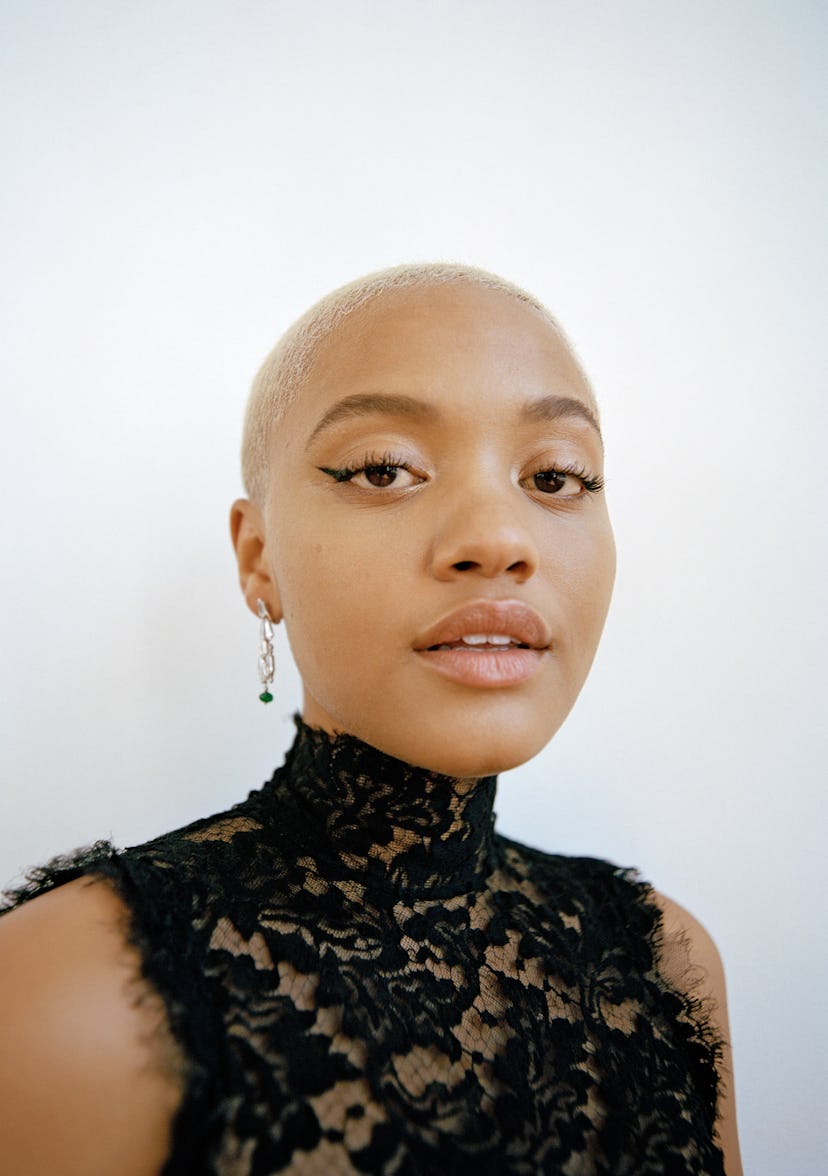Meet Kiersey Clemons, Sundance Favorite on the Cusp of Superhero Fame

When Kiersey Clemons was in third grade, she launched her acting career—as a flower in the school play. She was given no lines, but behind the scenes, she had a few sharp words for a fellow thespian. “When we got to school to put on our outfits for the play, some girl was wearing mine. She must have taken it, and I was like, ‘Oh, hell, no!’” Clemons recalled with a laugh at a cafe in Long Island City, Queens. “So I’ve been a drama queen from the beginning.”
Still, it wasn’t until Clemons, now 24, moved from Virginia to California at age 10 that she set her sights on a film career. Her mother had recently remarried, and her stepfather was in the Navy; as the family moved around, performing—whether a musical number for a talent show or a role in the school play—remained a relative constant. “I thought the whole state of California was Hollywood,” she told me. “I was like, ‘I’m going to meet frickin’ Will Smith on the street and he’s going to ask me to play his daughter in a movie.’”
This meet-cute may not have come to pass as she envisioned it, but after cutting her teeth on Disney Channel series like Shake It Up and Austin and Ally, her breakout moment did eventually arrive—with a starring role in 2015’s Dope, the hit Sundance indie whose cast also included A$AP Rocky and Zoë Kravitz. It was around the same time that she earned a recurring part in Transparent, and, “from there, all the dots started to connect,” she said. “I had this year of being able to play 18-year-olds acting like 18-year-olds.” She started focusing on independent films, appearing in Flatliners, The Only Living Boy in New York, and, this year, Hearts Beat Loud and Sweetheart. (There’s also the recently released L.A. Minute, which Clemons declined even to discuss by name—she instead encouraged me to sleuth her IMDb: “It was such an unhealthy environment,” she told me, adding later, “We’re not even going to bring light to it.”)
Dope also presented Clemons with her entry into the DC Comics universe. She won the role of Iris West—girlfriend of The Flash, the lightning-fast crime fighter played by Ezra Miller in Suicide Squad and Justice League—through director Rick Famuyiwa. (Famuyiwa was initially slated to direct the upcoming standalone The Flash film; Jonathan Goldstein and John Francis Daley stepped in after his departure, though the film has yet to enter production.) Clemons spent a few days on the London set of Zack Snyder’s Justice League, filming a scene that, though cut from the final release, offered her a glimpse of the scale of a superhero movie. “I was on this harness thing and Ezra was catching me mid-air, and it was all the ways that you kind of imagine filming a movie like that to be,” she described. “It was all very, like, ‘Whoa, I’m at a theme park.’”
A few months before we spoke, Clemons returned to Sundance for the first time since Dope to premiere Hearts Beat Loud, the musical dramedy in which she plays a college-bound young woman named Sam whose father, a record store owner and former musician played by Nick Offerman, tries to convince her to start a band. (In real life, Clemons also occasionally plays with her girlfriend. “We know, like, five songs,” Clemons said. One of those songs is “Don’t Know Why.”) Meanwhile, Sam embarks on a relationship with Rose (Sasha Lane as her college departure looms closer.
Looking at her resume, it might appear that there’s a strategy to her choice to frequently play queer women, whether Diggy in Dope, Chase in the Joe Swanberg-directed anthology series Easy, or Sam in Hearts Beat Loud. “I wish I could say that it was a choice that I made,” Clemons told me. “It just happened to play out like that, and I think it just has to do with my age and the time that we’re in.” She considered it for a moment. “I think it’s also a typecast thing,” she added. “I hope I can continue to do that, but I hope we can have an array of actresses that are able to be out and do that as well. Everyone deserves those opportunities.”
Still, she has sought out roles with social consciousness, however subtle—roles that, as she put it, lend her the sense of having “done something.” (Beyond film, she’s also waded into social justice, helping lobby for the courts to reexamine evidence in the case of Marcellus Williams, a death-row inmate who has been incarcerated for nearly two decades despite new evidence that could exonerate him. “I will involve myself in things where I can and where I’m necessary,” she told me.) Take, for example, Dillard’s Sweetheart, which she shot in Fiji. “To have me, little brown girl, and J.D., a black man, making this movie—and it’s kind of a standalone movie, it’s mostly me—it feels monumental,” she says. “You see those movies a lot, and it’s always a James Franco, it’s always a white man, or Blake Lively lookin’ hot on an island.”